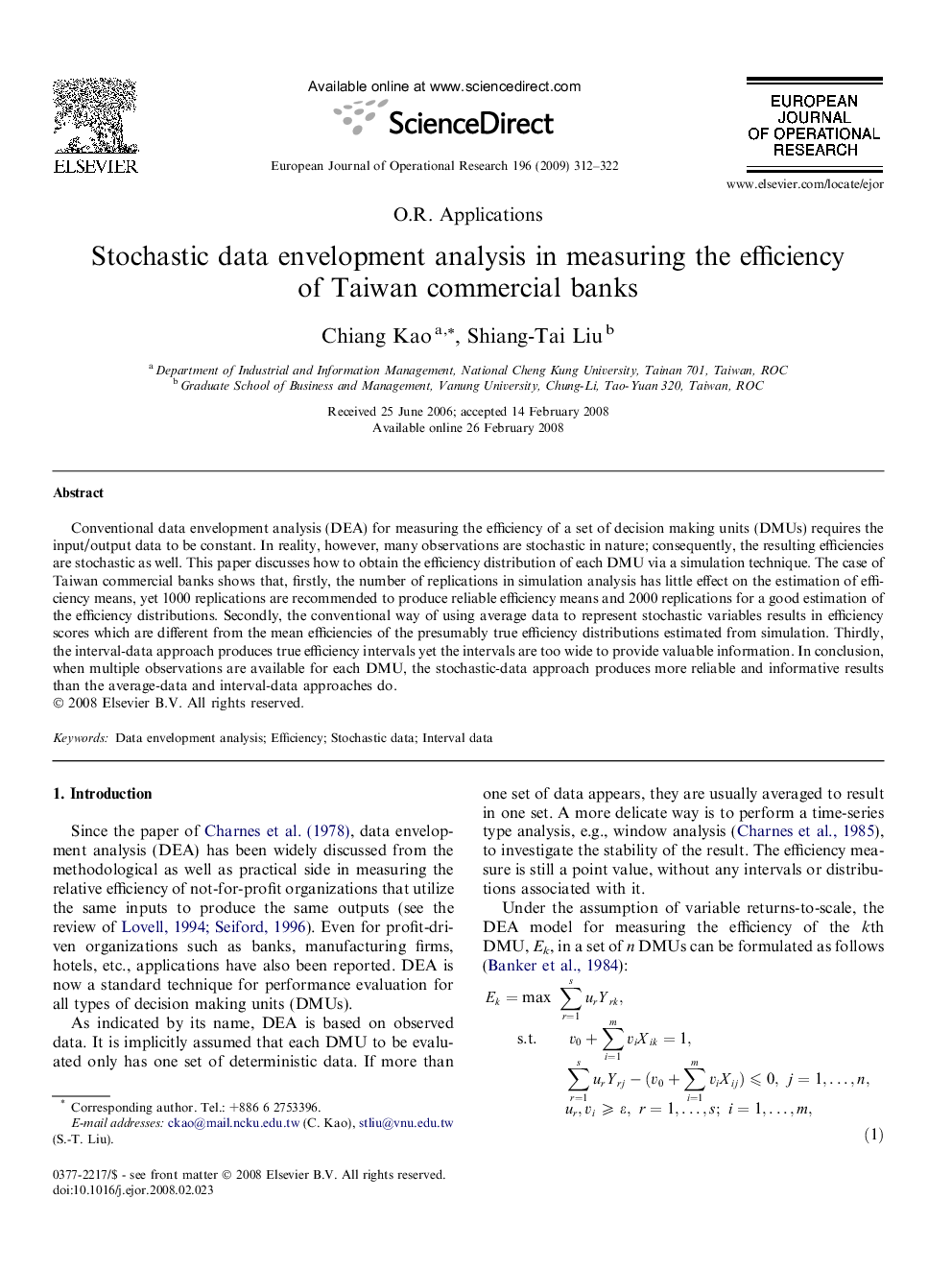| Article ID | Journal | Published Year | Pages | File Type |
|---|---|---|---|---|
| 477310 | European Journal of Operational Research | 2009 | 11 Pages |
Conventional data envelopment analysis (DEA) for measuring the efficiency of a set of decision making units (DMUs) requires the input/output data to be constant. In reality, however, many observations are stochastic in nature; consequently, the resulting efficiencies are stochastic as well. This paper discusses how to obtain the efficiency distribution of each DMU via a simulation technique. The case of Taiwan commercial banks shows that, firstly, the number of replications in simulation analysis has little effect on the estimation of efficiency means, yet 1000 replications are recommended to produce reliable efficiency means and 2000 replications for a good estimation of the efficiency distributions. Secondly, the conventional way of using average data to represent stochastic variables results in efficiency scores which are different from the mean efficiencies of the presumably true efficiency distributions estimated from simulation. Thirdly, the interval-data approach produces true efficiency intervals yet the intervals are too wide to provide valuable information. In conclusion, when multiple observations are available for each DMU, the stochastic-data approach produces more reliable and informative results than the average-data and interval-data approaches do.
